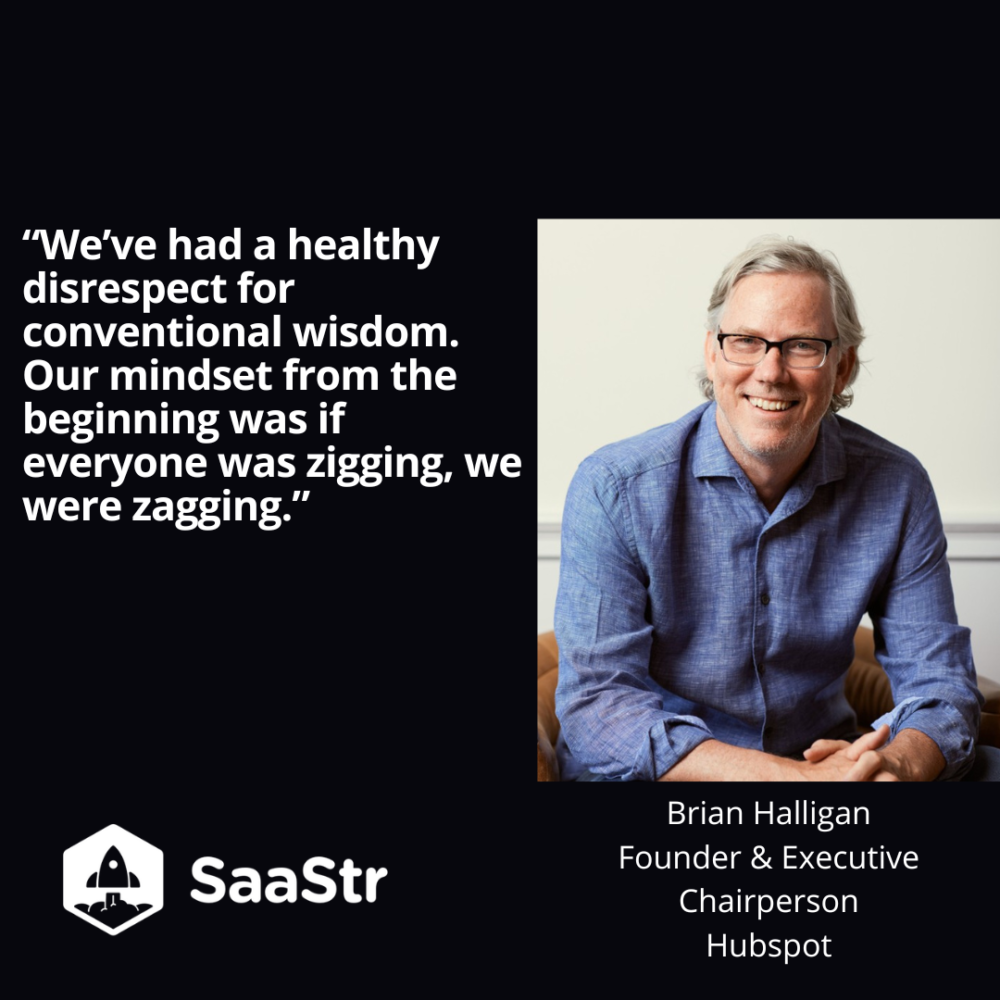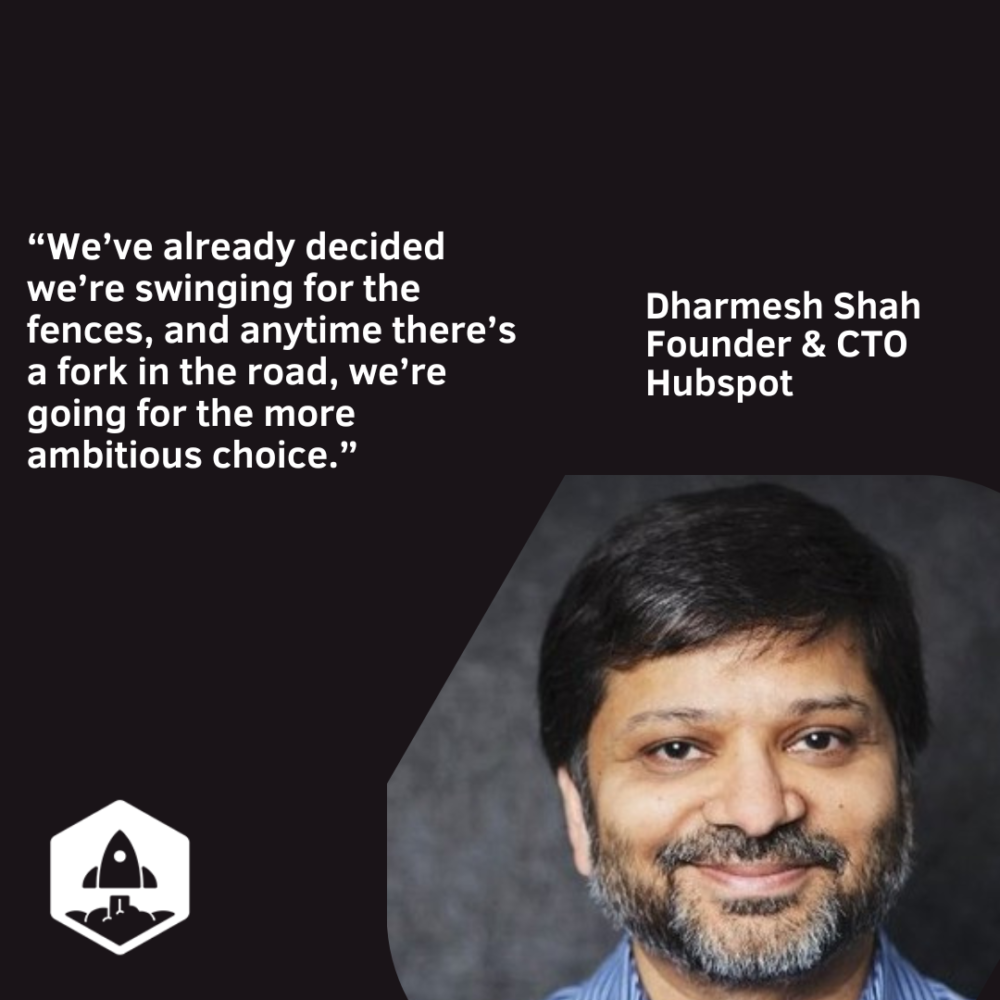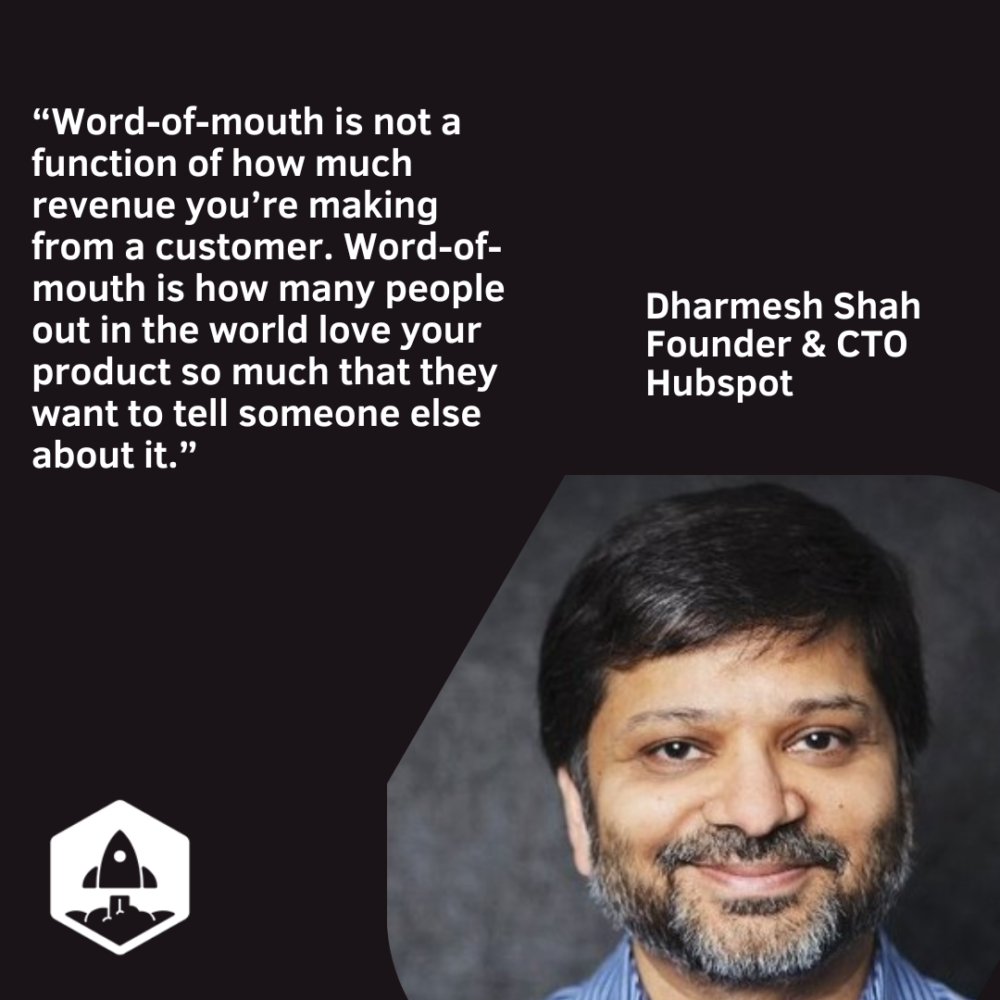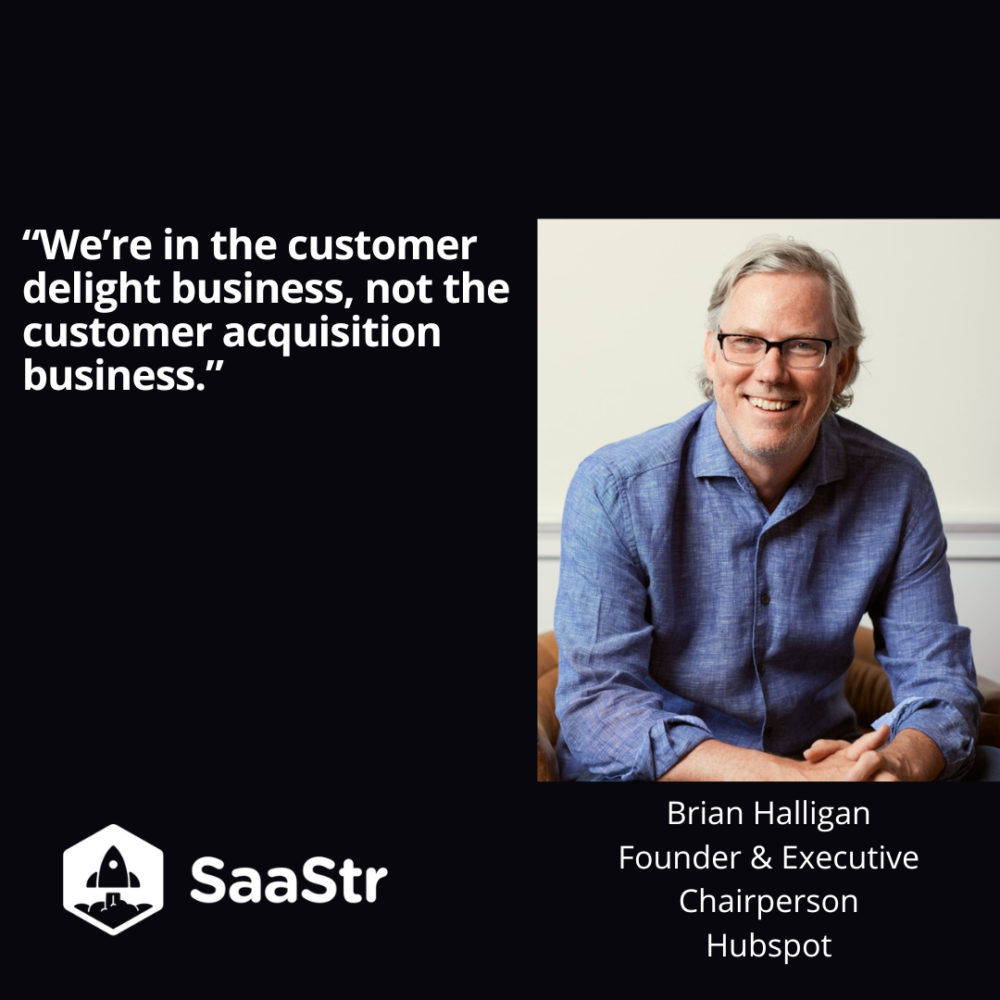We’re gearing up for our biggest, best-est SaaStr Annual 2024 (Sep 10-12 in SF Bay again!)
As part of that, we’re taking a look back at some of the best sessions ever. When both of HubSpot’s co-founders came to Annual to share their top learnings with Jason … that was something special.
A look back here:
Like any partnership or business venture, being a founder or co-founder takes a lot of communication and planning upfront to increase the likelihood of success. The most decisive founders have a solid grasp of their industry and are ready to take a risk to achieve something big.
HubSpot co-founders Brian Halligan and Dharmesh Shah describe what they learned along their journey, from creating their business to scaling it, and what you can do to be a successful founder in today’s economy.
Don’t be afraid to do the opposite of what people tell you to do.
The mechanics of running a business are not complex. You create a product and continue to make it better. Along the way, you invest in customer success and focus on your churn rate. You consider seed expansion, tier expansion, or venture capital funding to make it all possible. But the reality is much more difficult.
The common wisdom is to create a product and build an engineering and product team to support that. Creating something to sell comes first—bringing people on board to market and sell that product comes later. However, just because that’s the typical path doesn’t mean you have to take it.

“We’ve had a healthy disrespect for conventional wisdom. Our mindset from the beginning was if everyone was zigging, we were zagging.” – Brian Halligan
The two tricks to scaling a startup or a small business are:
- Keep your customer acquisition cost (CAC) low.
- Fill the gap that customer churn creates with a second pricing structure or product that your loyal customers will fill.
How you accomplish this is up to you. If it makes more sense for your business to build virality and a marketing or sales team before you heavily invest in the product—as Brian and Dharmesh did at HubSpot—don’t be afraid to run with it. The internet disproportionately benefits small businesses relative to larger enterprise businesses because it’s hard to judge a business’ size and wealth based on its website and online presence. Take advantage of that to build an online following around your business and product early.
If you want to try a bit of everything and see what sticks, you can—or you can rather focus on one or two things and become really great at them. Being a founder is making a series of choices along the way and changing course when you need to.
Get ahead of any disagreements or arguments.
Your main goal is to create a successful business and have a strong partner to support you throughout the process. The last thing you want is to argue or split things up with your co-founder. Stability makes for successful businesses.
How do you reduce the risk of having these arguments? It’s best to communicate as much as possible with your partner(s) as soon as possible. Before you found your company, go through a series of difficult questions like these:
- What do we want out of creating this business?
- What if, next year, someone comes to us and offers a multi-million dollar deal to acquire the company? Would we take it?
- What if one of us becomes disenchanted with the company and isn’t excited about working on it anymore?
- What if one of us is simply not putting in the hours for whatever reason? Or, what if one of us feels like we’re pulling much more than our weight?
- What is the line of succession if we want to step back after the business has grown?
By asking all these questions up front and creating a battle plan for each of them, you can get ahead of the large majority of agreements.
“We’ve already decided we’re swinging for the fences, and anytime there’s a fork in the road, we’re going for the more ambitious choice.” – Dharmesh Shah
Getting ahead of every single discussion or decision is impossible. Decisions will need to be made at multiple points during the founder journey, even if both co-founders are aligned.

Brian and Dharmesh shared the decision-making heuristic they use when talking through choices:
- If both founders agree, they take the action agreed upon, whether that decision is to do something or avoid it.
- If one founder feels very strongly about something and is willing to answer to that decision—and the other founder disagrees but weakly—the decision is made based on the founder who feels strongly about it.
- If both founders feel very strong but on opposite ends of an argument, one of the two—or an external, trusted party—breaks that tie.
This decision-making heuristic is intentionally not tied to expertise. Making decisions is less about jurisdiction and who owns what part of the business; it’s more about who feels most passionate about a decision or choice. For example, if one of the founders has sales and marketing expertise and the other doesn’t, the decision isn’t based on that expertise.
Getting NRR to 100%+ is Critical for SMB SaaS
HubSpot struggled until it went more “M” in the SMB to hit 100% NRR. Going multi-product was key to getting above 100%.
HubSpot struggled all the way through $20m, $30m+ ARR to grow toward 100%+ NRR. They were at 75% NRR in the early days. But it was critical to scaling. Their investors pushed them to go more enterprise — which they resisted. But they did push toward more “medium” sized SMBs to get to 100%+ NRR — the “M” of SMB.
You also have to keep your CAC low to make SMB SaaS work. And ultimately, you need a second product to make it all work.
You need at least a true path to 100%+ NRR when you sell to SMBs, even if you don’t and can’t start there.
“High churn and low NRR kept us up at night.”
Don’t underestimate the value of content creation and word-of-mouth.

Especially during the first few years of founding a company, creating content is vital to establishing an online presence and knowledge base. Content creation is valuable to startups because it forces founders to think about their business—who they are, who they want to become, their position in their business and industry, and who they want to market to. It’s a great way to pressure-test certain ideas or messaging methods.
HubSpot is an excellent example of creating content in the beginning and continuing to nurture that part of the business to the present day. With an average of 10 million blog views and 9 million podcast listeners a month, Brian and Dharmesh know that content is cumulative. Blog posts written years ago can still be relevant today, bring in leads, and create even greater word of mouth throughout the industry.
“Word-of-mouth is not a function of how much revenue you’re making from a customer. Word-of-mouth is how many people out in the world love your product so much that they want to tell someone else about it.” – Dharmesh Shah
Many founders focus solely on market share. There’s a reason for that, and it’s important to do so, but don’t forget about mind share. It may surprise you just how many customers come to you through word-of-mouth from other customers, previous customers, or followers of your business.

By all means, continue to focus on the number of customers you have and which big logos you have. But if you don’t focus on creating a positive image and brand identity for your business, those big logos won’t matter in the long run. Customer acquisition is important, but customer happiness is vital.
“We’re in the customer delight business, not the customer acquisition business.” – Brian Halligan
Takeaways
By being open to taking risks, discussing difficult questions ahead of time, and investing in content creation and brand marketing, your startup and fellow co-founders will be set up for success. Focus on the things you’re very good at, get great at them, and make a mark in your industry. If you take anything away from Brian and Dharmesh’s wisdom, it’s this:
- From the very beginning, try what feels right and see what sticks.
- Build your own decision-making heuristic to live by.
- The best way to figure out what you want your business to stand for is by writing content and getting as many people to read it as you can.

